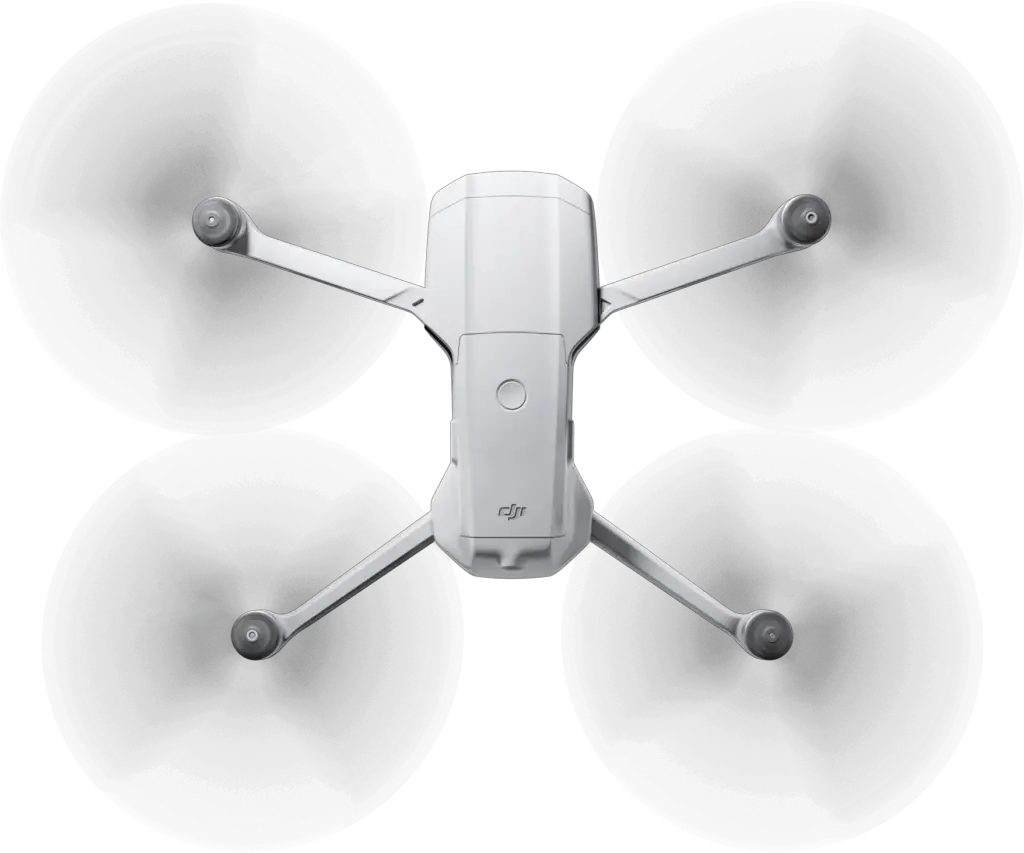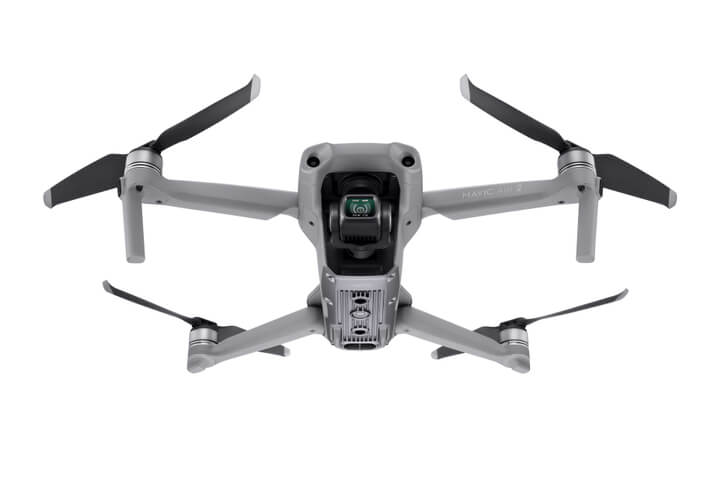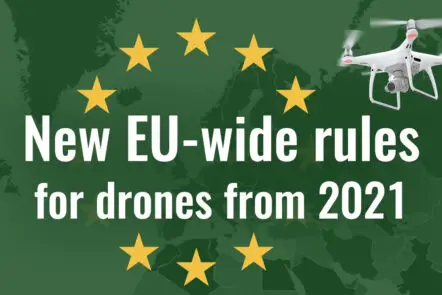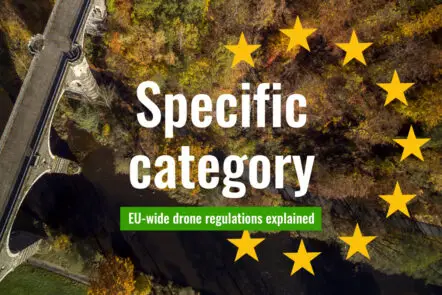DJI Mavic Air 2: What the new drone is all about
Last update on 02.10.2020 | 0 Kommentare

A good two years after the launch of Mavic Air, DJI presented its successor model. With improved features, the DJI Mavic Air 2 places itself between its predecessor and the higher class Mavic 2 Pro. In this article, you will learn what the Mavic Air 2 can do and if it is worth upgrading.
Higher weight, but longer flight time
Mavic Air has a special place in the hearts of many drone travelers, because it is compact and lightweight, yet it takes great pictures. The Mavic Air 2 takes off with similar features but has a disadvantage already in terms of weight. It weighs 570 grams and is therefore 140 grams heavier than its predecessor. This is mainly due to the larger battery, which gives it a flight time of 34 minutes and even beats the drones of the Mavic 2 series, which have to land three minutes earlier. Mavic Air only manages 21 minutes. However, I gladly accept the slightly higher weight for much better performance.
One design detail can make a big difference. For example, the propellers of the new DJI drone are bent upwards at the ends. This makes it quieter than the Mavic Air and makes it more suitable for flights in remote areas, as it produces less noise.
The maximum speed has not changed, the Mavic Air 2 reaches 68.4 kilometers per hour in S-Mode.
More fun through improved camera
DJI has noticeably worked on the camera for the Mavic Air 2. The camera has a 1/2 inch sensor and takes photos with up to 48 megapixels. In video mode, it reaches 4K (3,840 x 2,160) and it is protected from shaky shots by the proven 3-axis gimbal.
In low light conditions, HDR helps to achieve high-contrast images. The panorama function, which we already enjoyed with Mavic Air, is also back.
The 8 GB internal storage offers a lot of space, but the possibility of expanding with a microSD card allows you to store even more data.
Sophisticated flight maneuvers with the latest software
Thanks to automation, even occasional pilots get the best out of difficult flight maneuvers. As the latest DJI drone, the Mavic Air 2 is equipped with the most popular assistance systems in the latest version.

One example is ActiveTrack. It allows you to specify one or more objects to be followed by the drone. For example, it can film bicycle rides without gaps. The third version of the system is now available and is learning through artificial intelligence.
The pre-programmed flying around buildings and other elevations is also very popular. Point of Interest 3.0 makes this even easier.
The Mavic Air 2 also provides more safety. APAS 3.0 Obstacle Avoidance provides better obstacle detection, allowing the drone to automatically avoid obstacles if it gets too close to a tree or a wall. However, the system still only has sensors at the bottom, front and rear, and no sensors at the sides or top. The assistance system could, therefore, reach its limits in rough terrain.
New controller with greater range
The new remote controller is a further development even at first glance. The smartphone can now be inserted on top, making it easier to observe the screen and the drone at the same time. The controller also uses the OccuSync 2.0 system, which enables transmission via radio frequencies. This makes it possible to avoid interference, especially in the city, which sometimes occurs with WLAN connections. The first Mavic Air from DJI has experienced repeated problems with the radio connection due to the transmission technology. However, these annoying incidents no longer occur with the Mavic Air 2.
In addition, this system promises a range of up to ten kilometers (in FCC standard), which in practice, however, can hardly be used. In many countries, the permitted distance between pilot and drone is limited to the visibility range, so the ten kilometers are rarely used to the full.
Scope of delivery of the DJI Mavic Air 2
As with previous DJI drones, the Mavic Air 2 is offered with a Fly More Combo, which also includes two spare batteries, additional propellers, a charging station, and a shoulder bag. We recommend the purchase of the Fly More Combo because the flight fun can be quickly limited without additional equipment.
Conclusion
Just a few months ago, DJI shook up the drone market with the Mavic Mini. So it was to be expected that the manufacturer would not make too big a leap with the Mavic Air 2. However, the new model contains some developments that further professionalize the hobby sector. Particularly noteworthy are the improved camera and longer battery life, which make the drone a worthy successor to the popular Mavic Air.
If you are not sure which model is right for you, here we compare the most important specifications of different DJI drones:
| Specification | Mavic Mini | Mavic Air | Mavic Air 2 | Mavic 2 Pro |
|---|---|---|---|---|
| Weight (in grams) | 249 | 430 | 570 | 907 |
| Max. speed in km per hour | 46.8 | 68.4 | 68.4 | 72 |
| Flight time in minutes | 30 | 21 | 34 | 31 |
| Sensor | 1/2.3“ 12MP | 1/2.3“ 12MP | 1/2“ 48MP | 1“ 20MP |
| Photo format | JPEG | JPEG/RAW | JPEG/RAW | JPEG/RAW |
| Video quality | 2.7k 30fps 40 Mbit/s | 4k 30fps 100 Mbit/s | 4k 60fps 120 Mbps | 4k 30fps 100 Mbit/s |
| Obstacle sensing | down | down, forward/backward | down, forward/backward | left/right, up/down, forward/backward |
 EU-wide drone regulations: Classes of drones explained
EU-wide drone regulations: Classes of drones explained
 New EU-wide rules for drones from 2021
New EU-wide rules for drones from 2021
 EU-wide drone regulations: The Open category explained
EU-wide drone regulations: The Open category explained
 EU-wide drone regulations: The Specific category explained
EU-wide drone regulations: The Specific category explained